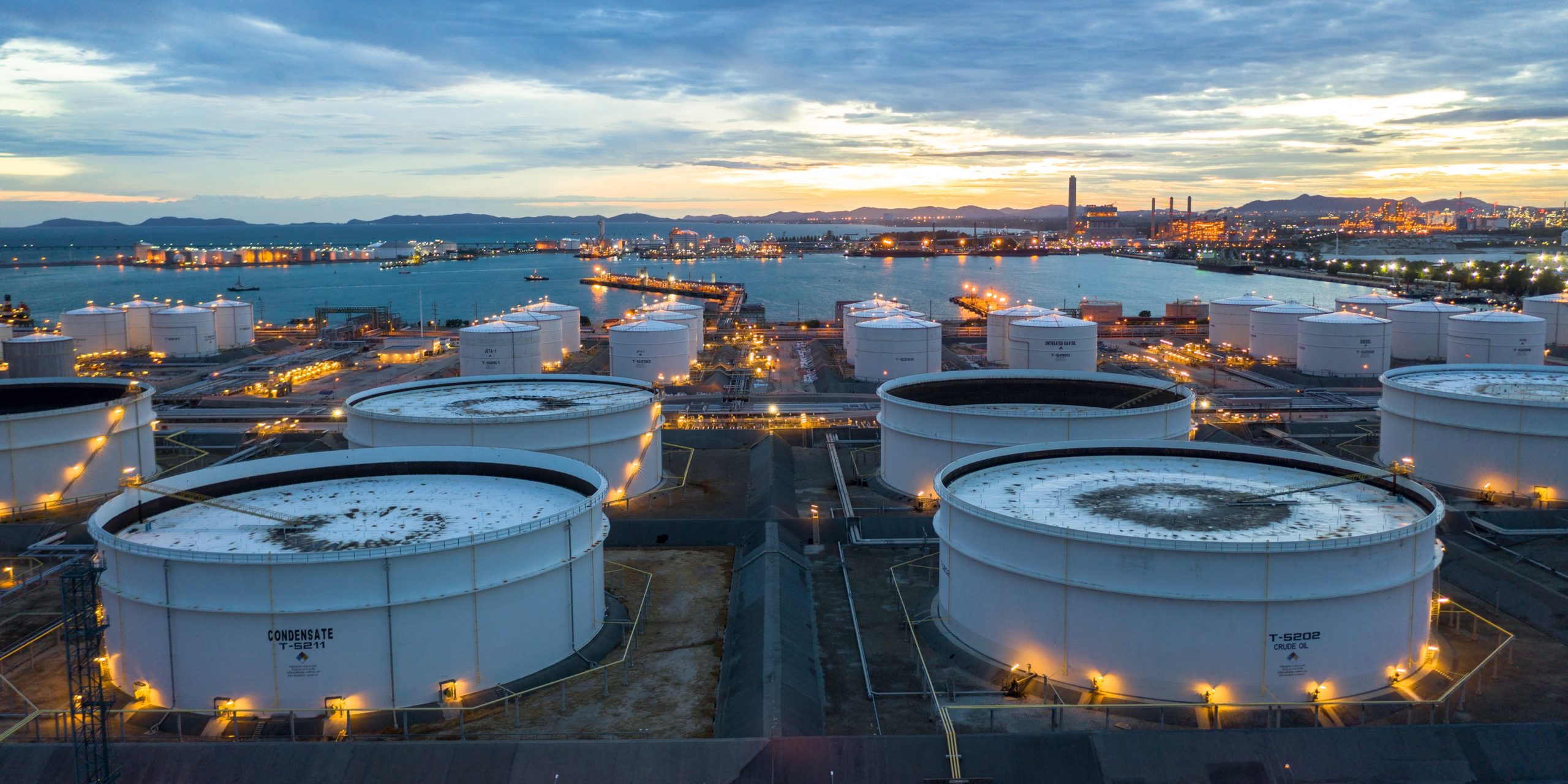
The Gulf of Mexico stands ready to become America's carbon storage powerhouse. With world-class geology, established infrastructure, and a skilled workforce already in place, the region has everything needed to lead the global offshore carbon capture and storage (CCS) revolution. There's just one thing missing: clear federal regulations from Washington.
While competitors worldwide move ahead with full-scale offshore CCS projects, the U.S. remains stuck waiting for the Department of the Interior to finalize rules that were supposed to be ready in November 2022. Every month of delay costs American companies investment opportunities and technology leadership in this rapidly growing market.
Why the Gulf Coast Is Primed for Offshore CCS
Few regions worldwide can match what the Gulf brings to the table for offshore carbon storage. The combination of natural advantages and existing industry expertise creates an unparalleled opportunity for rapid deployment.
Geological Goldmine
The Gulf's geology reads like a carbon storage wishlist. Vast deep saline formations stretch beneath the seafloor with capacity to store billions of tons of CO₂ securely for decades. BOEM has already identified 21 depleted reservoirs with Tier 1 reservoir shale across 9 different fields that are prime candidates for geological storage.
These formations aren't theoretical—they're proven. The same geological structures that safely contained oil and gas for millions of years can now serve as permanent CO₂ repositories.
Strategic Location Advantage
Geography matters in carbon storage, and the Gulf Coast delivers perfectly positioned advantages:
- Proximity to major emitters: Industrial hubs in Texas and Louisiana sit just miles from offshore storage potential
- Reduced transport costs: Short distances from emission sources to storage sites slash project economics
- Existing infrastructure: Ports, fabrication yards, and shipyards ready to pivot from oil and gas to CCS support
- Proven workforce: Thousands of engineers, geoscientists, vessel crews, and offshore safety professionals already operating in this environment
>> RELATED: Bayou Bend's Ambitious Carbon Storage Hub Could Reshape Industrial Decarbonization

Momentum Builds Despite Regulatory Delays
Private sector momentum in Gulf Coast CCS continues accelerating, even without final federal rules. Companies and research organizations aren't waiting for Washington—they're investing now to position for the regulatory framework that will eventually come.
Key Gulf Coast CCS Developments in 2025:
- April 2025: TGS completed its comprehensive Mega Gulf Coast Assessment, mapping carbon sequestration potential across coastal Texas, Louisiana, and Mississippi
- Ongoing: GoMCarb partnership evaluating offshore storage potential with final results expected by mid-2026
- September 2024: Viridien completed Phase 2 of its GeoVerse Carbon Storage Screening Study for Texas state waters
The TGS assessment alone represents a massive data compilation. The Central Gulf Coast–Haynesville CO₂ Storage Assessment integrates petrophysical and stratigraphic analysis from 2,326 wells and utilizes over 150 core analysis reports to refine geological interpretations across the region.
This isn't just academic research. These studies provide the geological foundation that developers and investors need to make informed decisions about where and how to deploy billions in capital for offshore CCS projects.
Private Sector Investment Ready
Early private sector investment signals are already emerging across the Gulf Coast. While specific project details remain confidential until regulatory pathways clarify, industry sources indicate substantial capital commitments are ready to deploy once permitting processes become clear.
The offshore energy sector hasn't been waiting idly. Trade associations and technical groups have spent years developing detailed recommendations for BOEM and BSEE covering everything from site characterization to long-term monitoring frameworks.
What Clear Federal Rules Can Unlock
The Infrastructure Investment and Jobs Act of 2021 gave the Department of the Interior authority to oversee offshore carbon sequestration. The law required implementing regulations by November 2022—a deadline that came and went with no proposed rule in sight.
What the industry needs from Interior's framework is straightforward but critical:
- Durability: Long-term regulatory certainty that gives investors confidence to commit capital for decades-long projects
- Transparency: Clear leasing criteria, timelines, and operational responsibilities that eliminate guesswork
- Flexibility: Adaptable frameworks that can accommodate new technologies and evolving best practices
- Safety focus: Environmental stewardship grounded in decades of proven offshore operational experience

"Every year of regulatory delay is a year of lost investment, lost technology leadership, and lost opportunity for Gulf Coast communities that are ready to work."
Erik Milito, President of National Ocean Industries Association
The regulatory framework development process itself needs to be collaborative. Engaging industry stakeholders, state governments, and environmental groups ensures the final regulations are both workable and comprehensive.

>> In Other News: Frontier Drops $31M on Ocean Antacids in Massive Carbon Bet
Economic Impact Beyond Carbon Storage
Offshore CCS represents more than just an environmental solution—it's a significant economic opportunity for Gulf Coast states. The ripple effects of a robust offshore carbon storage industry would touch multiple sectors and create lasting economic benefits.
Industrial Ecosystem Benefits
The economic multiplier effects of offshore CCS development reach far beyond the storage sites themselves:
- Shipyards and fabrication: New contracts for specialized offshore equipment and platforms
- Manufacturing: Orders for compressors, pipelines, monitoring systems, and injection equipment
- Port infrastructure: Investments in terminals, dredging, and specialized logistics capabilities
- Service providers: Expanded market for offshore installation, maintenance, and monitoring services
For U.S. manufacturers specifically, offshore CCS creates domestic demand for highly specialized equipment that can drive innovation and export opportunities. American companies that establish early leadership in offshore carbon storage technology will be well-positioned to serve the global market.
Global CCS Market Projections:
| Metric | Current | 2030 Projection |
|---|---|---|
| Global CCS Capacity | ~40 Mt CO₂/year | 240+ Mt CO₂/year (6x increase) |
| Cumulative Investment | $15 billion | $80+ billion |
| U.S. Market Share | Limited | TBD (depends on regulations) |
Energy Security Implications
Beyond economic benefits, offshore CCS strengthens U.S. energy security by enabling continued domestic production in hard-to-abate industrial sectors. Steel, cement, and refining operations critical to American economic competitiveness can maintain domestic capacity while meeting decarbonization goals.
This keeps production and jobs in America rather than forcing industrial activity offshore to countries with less stringent environmental standards—a phenomenon known as carbon leakage that undermines global climate goals.
Global Competition Intensifies
While the U.S. waits for regulatory clarity, international competitors aren't standing still. Offshore CCS projects in the North Sea, Southeast Asia, and Australia are moving from concept to commercial reality with government support and clear regulatory frameworks.

"DNV forecasts $80 billion in cumulative CCS investment over the coming decade."
DNV Global CCS Forecast
The window for American leadership in offshore CCS won't remain open indefinitely. First-mover advantages in this capital-intensive industry can create lasting competitive positions that are difficult to overcome later.
The Path Forward
The Gulf of Mexico represents America's best opportunity to establish global leadership in offshore carbon storage. The region combines unmatched geological advantages with existing industrial expertise and infrastructure that can't be replicated elsewhere.
Recent signs of federal support, including comments from Interior leadership acknowledging the importance of offshore CCS, provide reason for optimism. The challenge now is translating that recognition into concrete regulatory action that unlocks the Gulf's potential.
Urgency Meets Opportunity
The convergence of technological readiness, industry commitment, and growing climate urgency creates a unique moment for federal action. Companies have spent years preparing technical solutions and investment capital. Geological studies provide the scientific foundation for safe, large-scale deployment.
What's needed now is the regulatory certainty that transforms potential into reality. Clear federal rules will signal to global markets that America is serious about leading the offshore carbon storage revolution.
The Gulf of Mexico stands ready to become a world-class carbon management hub and position America as the global leader in offshore CCS technology. The geological gifts are there. The industrial capability exists. The investment capital is waiting. Washington just needs to move.
Subscribe to the newsletter
Daily decarbonization data and news delivered to your inbox
Follow the money flow of climate, technology, and energy investments to uncover new opportunities and jobs.
Latest issues
-
How 45Q Credits Revived This Troubled $9B Megaproject
Inside This Issue 💰 How 45Q Credits Revived This Troubled $9B Megaproject 🍁 Commencement of First Phase Operations for a Carbon Capture and Storage (CCS) Project in Canada 🤝 Haffner Energy Secures...
-
The Deal Structure Everyone's About to Copy
Inside This Issue 💼 The Deal Structure Everyone's About to Copy 📈 Exxonmobil Raises Its 2030 Plan – Transformation Delivering Higher Earnings, Stronger Cash Flow, and Greater Returns ⚡ Nextera Wor...
-
Inside XCF Global's $300M Bet to Double U.S. SAF Output
Inside This Issue ✈️ Inside XCF Global's $300M Bet to Double U.S. SAF Output ⚙️ Capsol Technologies Signs MoU with US Utility to Deploy CapsolGT® for Low-carbon Gas Power Generation 🏭 Babcock &...
Company Announcements
-
Clean Planet Technologies (CPTech), part of the Clean Planet Group, has announced that its core pyrolysis-oil upgrading process has now been formally patented in both the United States and Saudi Ar...
-
(December 12, 2025 - Oslo, Norway) Nel ASA (Nel, OSE: NEL) is pleased to announce that following a seven-year development program, and now a successful start-up and production of clean hydrogen on ...
-
Hydrogen Technology Venture Launches in Bowling Green
BOWLING GREEN, Ky. — A new tech company is coming to Bowling Green, bringing dozens of jobs to Warren County. What You Need To Know UFS ARK will be a joint venture of United Fiber Sensing and OgM...
-
HyOrc Positions Green Methanol as the Economic Solution to Shipping’s Decarbonization Challenge
HOUSTON, Dec. 12, 2025 (GLOBE NEWSWIRE) -- HyOrc Corporation (OTCID: HYOR), a fully SEC-reporting clean-energy company focused on decarbonizing heavy industry, today commented on the growing global...